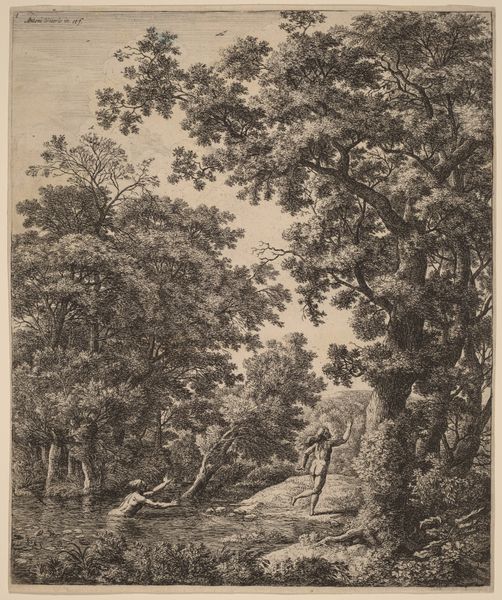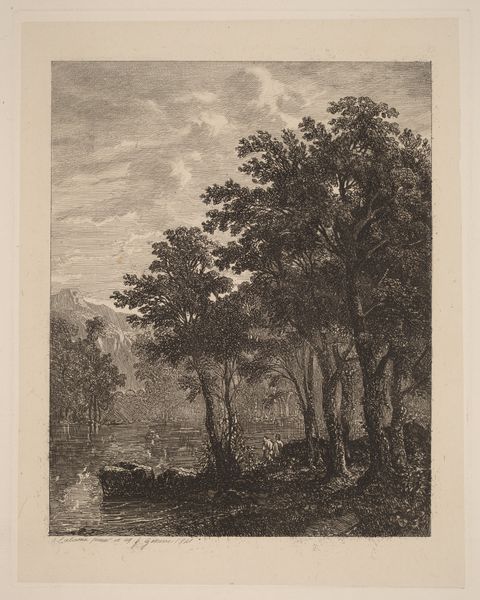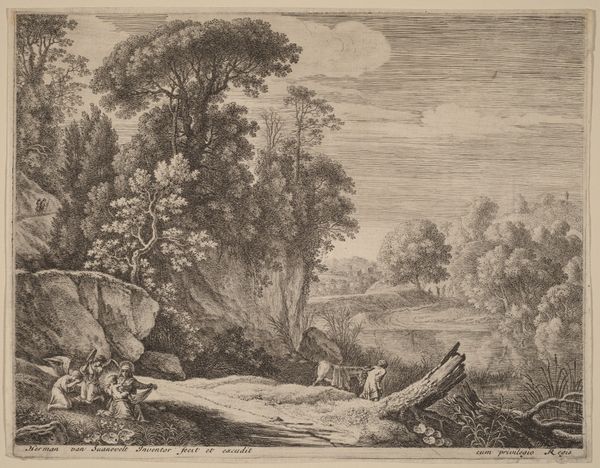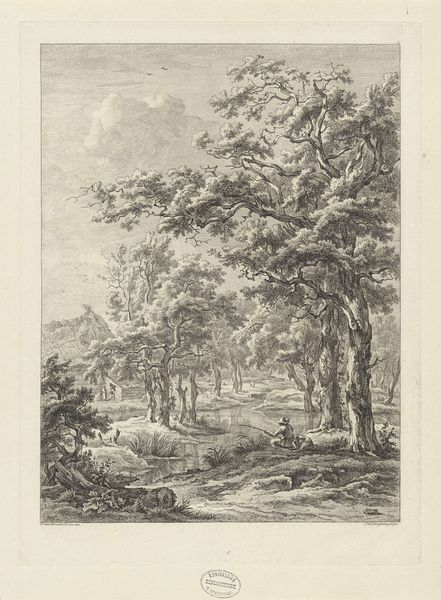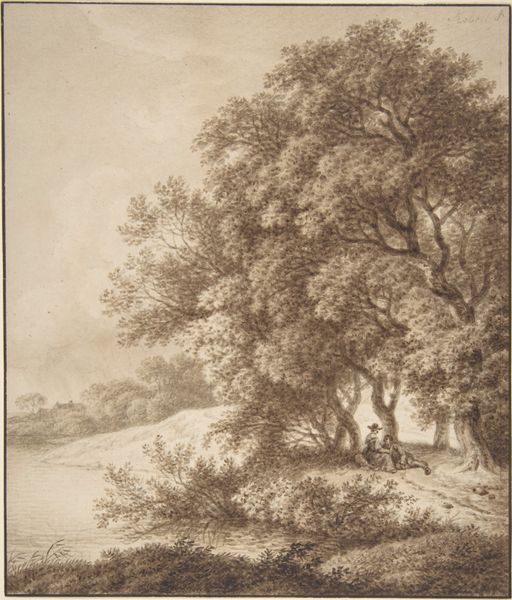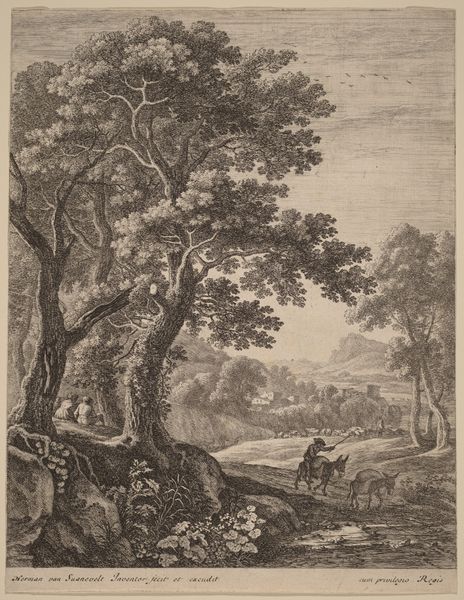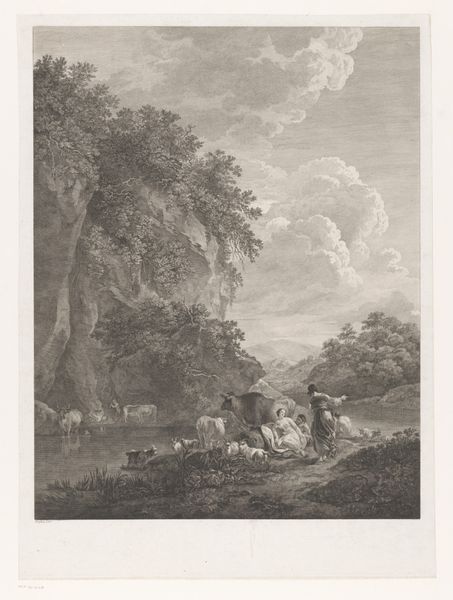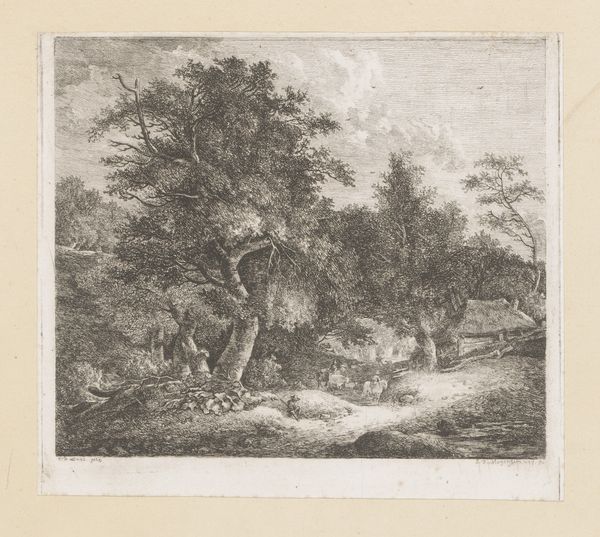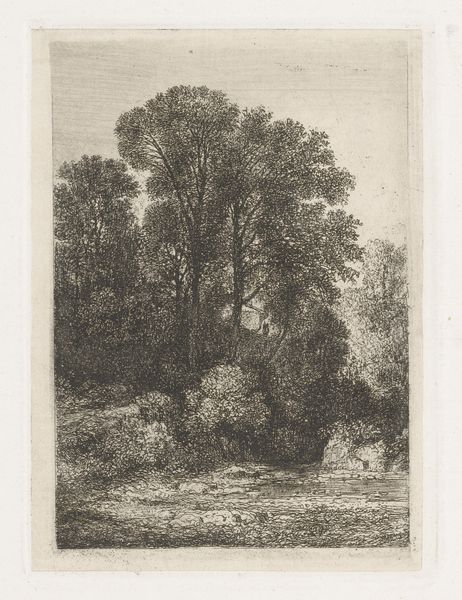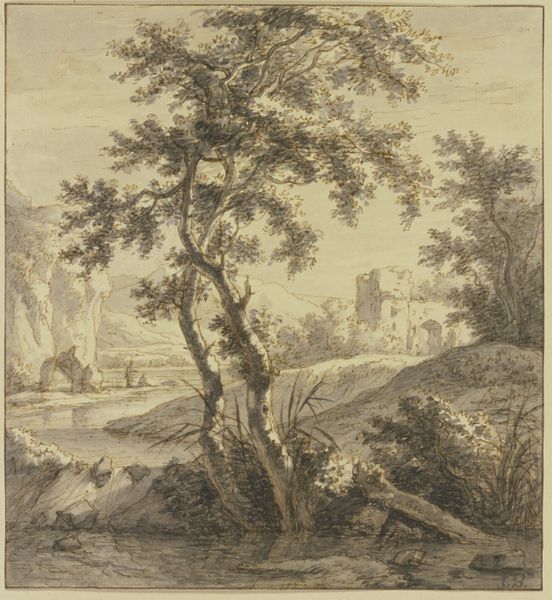
print, etching
# print
#
etching
#
landscape
#
romanticism
#
line
Copyright: National Gallery of Art: CC0 1.0
Editor: This is Alexandre Calame's etching "Riders by a Pond," from 1841. The meticulous linework is striking. The Romanticism tag is fitting given the somewhat picturesque scene and my own immediate sense of serenity... How do you interpret this work in its historical context? Curator: Well, understanding Calame through a historical lens means considering the rise of landscape art as a potent expression of national identity and bourgeois values. This image, ostensibly just a scene, participates in the romanticized view of nature prevalent during the early 19th century. The "natural" landscapes were staged in ways to serve an emergent sense of shared identity and morality. Notice the riders – who are they? Editor: They seem almost like anonymous figures, embedded in the landscape itself, they look upper-middle class? Is it suggesting some specific socio-political structure? Curator: Precisely! Calame catered to the rising bourgeoisie. Prints like this, widely reproducible and distributed, helped disseminate ideas about what constituted beauty and, by extension, an ideal national character rooted in this fabricated vision of Nature. Consider the pond itself— is it "natural" or constructed? Editor: That's interesting, the pond looks more curated now that you mention it! Almost staged in front of that magnificent foliage. So, art shapes our perception and vice versa? Curator: Absolutely. Museums and galleries were then also in their infancy but quickly gained power as sites to re-iterate similar concepts. We need to constantly re-evaluate the socio-political roots embedded within idealized artworks such as this etching. What have you gleaned? Editor: That beauty itself can be a powerful tool, almost propaganda if its disseminated to uphold the values of a certain class. Curator: Indeed, viewing art through its historical framework enriches our perception. I'm glad this was useful.
Comments
No comments
Be the first to comment and join the conversation on the ultimate creative platform.

